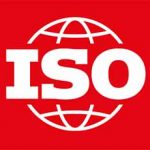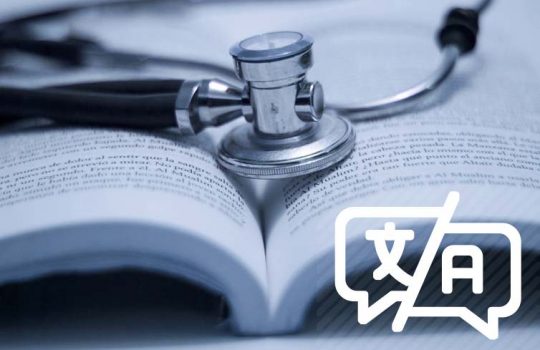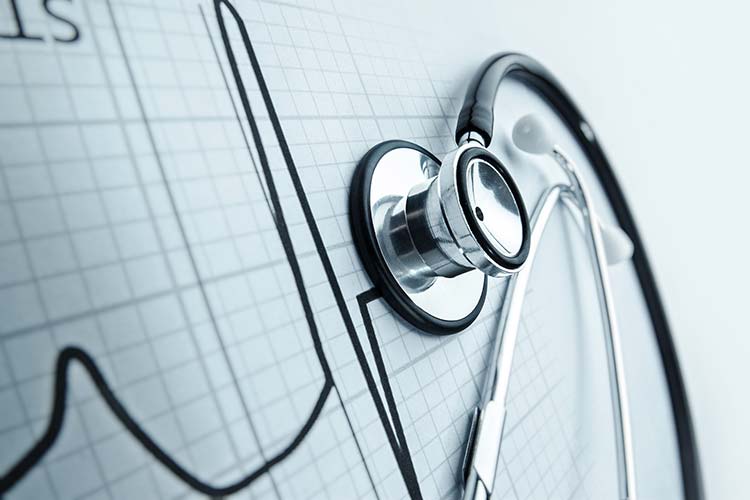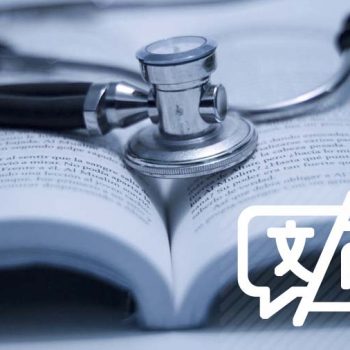Medical translation is different from other scientific and technical translations, as it is directly linked to human health and well-being. As a result, requirements for translator qualifications are more stringent.
In order to translate medical documents, translators must not only have profound knowledge of their working languages, but also understand their scientific content, which involves managing various technical glossaries.
Healthcare and medical professionals use a highly specialized vocabulary of about 20,000 words. Medical terminology is the study of these terms.
There are two approaches to medical terminology: learning the terms by heart and understanding how they are formed. Medical translators seek to understand the underlying structure of medical terminology.
For example, identifying prefixes, roots, and suffixes makes it easier to interpret the overall meaning of a new word.
This is why it is important to be extremely familiar with prefixes, suffixes, and roots.

Prefixes are derived from Latin or Ancient Greek. In general, they refer to a position or a condition. For example, in “hypertrophy,” the prefix “hyper” means “increase.” Its antonym, “hypo,” refers to a “decrease.”
| PREFIX | MEANING | EXAMPLE |
| Hyper / Hypo | Augmentation / Diminution | Hypoglicémie |
| Sus (supra) / sous (sub) | Au-dessus / En-dessous | Subclaviculaire |
| A (an) / Eu | Absence de / Normal(e) | Apnée |
| Tachy / Brady | Rapide / Lent | Bradycardie |
| Exo (extra) / Intra | Dehors / Dedans | Intrathoracique |
| Poly / Mono | Plusieurs / Un seul | Polyurie |
Suffixes refer to a function or disease, for example:
| SUFFIX | MEANING | EXAMPLE |
| …ite | Inflammation | Laryngite |
| …stomie | Incision chirurgicale | Laparotomie |
| …pnée | Respiration | Tachypnée |
| …pepsie | Digestion | Dyspepsie |
| …gène | Qui provoque ou produit | Tératogène |
| …ome | Tumeur | Mélanome |
| …émie | Sang, dans le sang | Oxcémie |
| …orrhée | Ecoulement | Othorrée |
| …ptysie | Crachements | Hémoptysie |
| …scopie | Regarder | Gastroscopie |
Last but not least, we have roots (which can sometimes be part of the prefix or suffix). Roots refer to organs, tissues, or functions.
| ROOT | MEANING | EXAMPLE |
| Cardio, cardie, carde | Cœur | Cardiomégalie |
| Pnée, pneu | Ventilation, air | Pneumothorax |
| Oxy, ox | Oxygène | Oxémie, hypoxie |
| Glyc | Glucose | Glycémie, glycurie |
| Urie, uré | Urée, urine (production) | Urémie, anurie, polyurie |
| Céphal | Tête | Encéphalite |
| Cyste | Vessie | Cystite |
| Néphro | Rein | Néphrite |
| Gastro | Estomac | Gastrite |
| Entér | Intestin grêle | Entérite |
| Phleb | Veine | Phlébotomie |
It is quite clear that understanding medical terms requires proper knowledge of the meaning of various prefixes, suffixes, and roots. As soon as translators have learned the main terms in the source and target languages, it becomes easier to translate any medical terms they might encounter.
Accuracy is paramount in medicine, since any translation error could have serious consequences. This is why even those who speak the language need professional translation services to properly understand articles, books, or instructions on medical procedures, new medication, or medical protocols.
Medical documents are overflowing with specific terminology, professional jargon, abbreviations, and medical acronyms. Abbreviations are often used to refer to the names of medical procedures (ultrasounds, ECG, FPG), diseases (AIDS, cerebral palsy, TB, TIR), infectious agents (HIV), and medicines and medical products.
Many non-specialists are familiar with some of these abbreviations and their target language translations, but many others are only used in medical circles. For example, it may not be obvious what “cerebral motor weakness” refers to in French (cerebral palsy), or that “PMD” in French means “bipolar disorder.”
Finally, it may be difficult for laypeople to understand medical texts. Translators may encounter terminological and linguistic challenges while working on medical documents. For instance, although medical terms are often similar in different languages, they may have different nuances in Russian, Chinese, Korean, or other languages. In medicine, just like in any other field, one may encounter false cognates, also known as “false friends of the translator.” Of course, it is up to the translator to resolve terminological and linguistic issues.
The nomenclature in various branches of medicine reflects the necessary rigor and precision in the use of scientific terms, the ability to accurately refer to a specific topic or concept. It is best to leave out expressiveness, associations, and other characteristics typical of style and rhetoric. Neutrality and accurately conveying the meaning of the text are paramount. Word-for-word translations should be avoided, especially for scientific articles.
Only words with deep roots in a language, associated with a wide variety of connotations shared by all native speakers, can convey nuanced meaning. For example, for a translation into Russian:
Oxygenium (latin) – oxygen (english) ;
Chlorum (latin) – chlorum (english) – хлор [chlor] (russian) ;
acidum, (latin) – acid (english) – acide (russian).
In one way, these terms are “international” and simplify the translator’s task. English terminology contains a large number of loan words.
While translating, we must remember that in English, words may have a different meaning, they may be used differently from their “international” counterparts, or have uncommon and special meanings. To ensure perfect understanding, it may be necessary to omit certain words that were present in the original, or to add something to account for the way linguistic codes work in the target language. We would like to emphasize the fact that the translator, in addition to knowing terminology, must also be able to imagine the medical situation in each case, i.e. picture the subject behind the words.
The role of ISO standard 17100:2015
 In medical translations, it is very important for translators to consistently use a high-quality term base or glossary. The medical industry should therefore comply with international translation standards. All of these are listed in ISO 17100.
In medical translations, it is very important for translators to consistently use a high-quality term base or glossary. The medical industry should therefore comply with international translation standards. All of these are listed in ISO 17100.
The significance of this international certificate in the field of medicine is undeniable. It applies both to the translation of medical documents and to various educational and scientific publications. Its advantages can be maximized by maintaining a glossary, providing accurate and high-quality services, accounting for the unique nature of medical translations, making sure services are provided only by professionals, and ensuring that deadlines are respected.
The advantages of medical translations done by experienced translators
The upsides of this service are clear: our experts can translate texts quickly and efficiently into different languages. When needed, they can also translate foreign references and medical files. They can be extremely helpful for those forced to seek medical care abroad. This always results in top-quality, irreproachable medical translations, as our medical translators:
- Have learned to rely on etymology to understand and memorize medical vocabulary
- Are familiar with the basic concepts of human biology
- Know the most commonly used medical terms in each field of medicine



